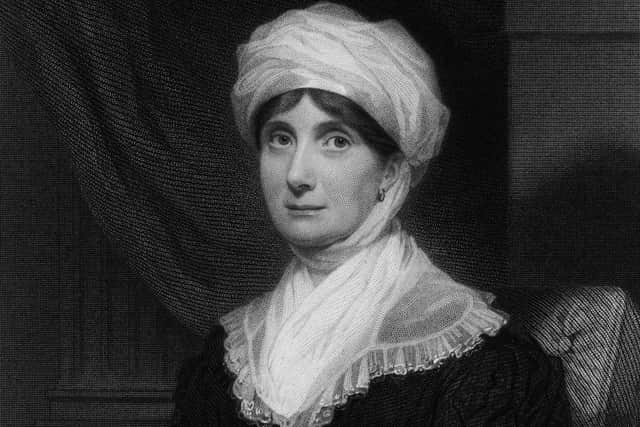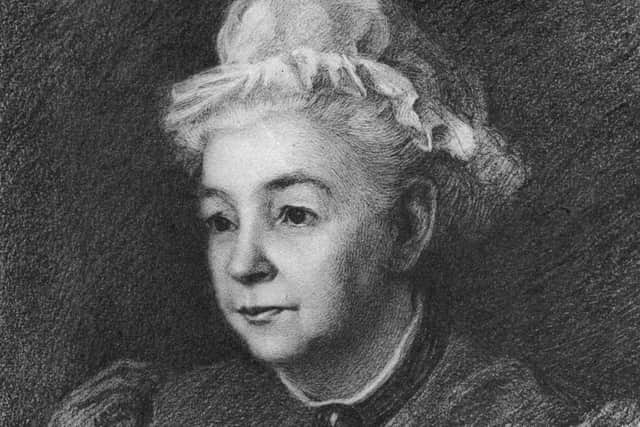Book review: Scottish Women Writers: From 1800 To The Great War, by Eileen Dunlop
It is heartening that nowadays names like Susan Ferrier, Mary Brunton and Mary Somerville are better known than they might have been a generation ago; although whether they are read as well as kent is a different matter altogether. In all honesty, which of you have read Destiny or Discipline or The Mechanism Of The Heavens? That there were interesting, witty, intellectual and popular female writers in Scotland’s past ought not to be in dispute. Whether they will be read again outside of academic circles is a more wanchancy proposition. If England can boast of Jane Austen, the Brontë sisters, Mary Anne Evans (i.e. George Eliot) and even less canonical writers such as Mary Elizabeth Braddon and Maria Louise de la Ramé (i.e. Ouida), let alone poets such as Christina Rossetti and Elizabeth Barrett Browning, Scottish literature seems somewhat sparse in comparison. It’s a smaller country, after all.
When I was contemplating this review, I did a mental experiment: how many books by Scottish female writers are recognised as classics by that nebulous thing, the Establishment? I have my copy of Miss Marjoribanks by Margaret Oliphant as Penguin Classic (although my copy still styles her “Mrs Oliphant”), a small Penguin travel volume by Isabella Bird and an Oxford World’s Classics edition of Susan Ferrier’s Marriage. I actually have some of Joanna Baillie’s plays in a tatty four volume set of The British Drama printed long before my birth.
Advertisement
Hide AdA major feature of this book is the difference between professional writers and women who wrote without thinking of publication. It is an important distinction. Jane Welsh Carlyle’s letters are remarkable, but they were private until Froude used them in a biography of her husband. Elizabeth Grant of Rothiemurchus is better known as “the Highland Lady”, but her sometimes caustic, sometimes boring memoirs were capitalised by her family after her death. Had the time-frame of the book been extended, it would have been interesting to read a reappraisal of later commercial writers, such as Annie S. Swan (also known as David Lyall) – who at least has a street named after her in Cumbernauld.


Why the disparity? Dunlop makes her pitch very clearly. The women writers were constricted by “baleful” Calvinism, the “ingrained hostility” of the Church, the “illiberal mindset of the Kirk” and they suffered since “the claws of Calvinism were slow to loosen their grip on the Scottish imagination”. There are two problems with this. Firstly, it is a caricature of Calvinism, which actually facilitated Scotland having a higher literacy rate than England well into the 19th century. Secondly, and more importantly, it is rather demeaning towards the female authors Dunlop wishes to champion. It is true that Brunton and Ferrier can seem didactic and moralising. The idea, however, that if they had not been bound by propriety they would have written Regency Edinburgh’s version of Fifty Shades Of Grey is unsustainable. Might it not be too much to imagine that the reason they wrote in such a manner was that they truly believed in what they were trying to impart?
Male writers get slightly dismissive remarks in this work. Sometimes, as in Matthew “Monk” Lewis’s case or some of the more acerbic reviews by Francis Jeffrey, this is justified. Walter Scott is made marginal and pitiable, which is rather unfair to a man who did so much to promote women’s writing. At the end of A Legend Of Montrose he writes a stunning endorsement: “I retire from the field, conscious that there remains behind not only a large harvest, but labourers capable of gathering it in. More than one writer has of late displayed talents of this description; and if the present author, himself a phantom, may be permitted to distinguish a brother, or perhaps a sister shadow, he would mention, in particular, the author of the very lively work entitled MARRIAGE.” He also wrote about Jane Austen, Mary Shelley and Maria Edgeworth in laudatory terms.
Similarly, it seems to me misguided to berate Bram Stoker for having read and re-imagined (or as the author has it, “lifted straight”) folklore from Emily Gerard’s The Land Beyond The Forest, and to say that Dracula has “weak characterisation, old-fashioned emphasis on English upper-class manliness and sexist stereotypes”: it is a very complicated book, that vexes as much at technology as at vampires.
I was delighted to see Christian Isobel Johnstone given due prominence; not just as (possibly) the first female periodical editor, but as the author of the first celebrity cookbook. Admittedly, it was ascribed to a fictional character – Meg Dods from Walter Scott’s Saint Ronan’s Well – but the sheer chutzpah of the endeavour is staggering. Scott did not bat an eyelid at the copyright infringement.


There are many books described here for which I shall keep an eye out when I am drifting through second-hand bookshops. (Oliphant’s Passages In The Life of Mrs Margaret Maitland is top of the list). Any open-minded reader will learn a lot from this work. Whether it translates into purchases, or reading, is a different matter entirely.
Scottish Women Writers: From 1800 To The Great War, by Eileen Dunlop, National Museums Scotland, £14.99